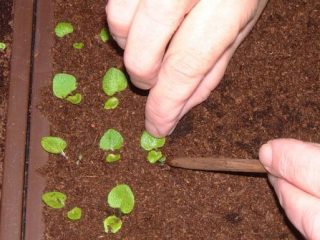Content
Petunia is an annual plant that is consistently “in demand” due to the widest variety of plant configurations, flower shapes, petal colors, as well as the duration and abundance of flowering, low maintenance requirements and successful resistance to diseases and pests. It can be grown not only in open ground: petunia on a balcony, veranda, or in a gazebo looks no less impressive than in a flower bed. The main thing is to choose a suitable variety and take into account some of the nuances of agricultural technology due to the “closedness of space”.
Which petunia is best to plant on the balcony?
Petunias suitable for planting on the balcony are conventionally divided into several groups, based on the characteristics of their appearance:
- Bush. The best varieties of petunias for balcony boxes or pots. The plants are compact, low (25-50 cm), with erect, intensively branching stems. They practically do not need pruning; the bush “spontaneously” takes on a shape close to spherical. The flowers of bush varieties are simple and double.This group of varieties is divided into four subgroups: multiflora (many-flowered), milliflora (small-flowered), grandiflora (large-flowered) and floribunda (large-flowered, abundantly flowering). All of them are suitable for landing on the balcony.
After heavy rains and winds, bush petunias on the balcony greatly lose their decorative properties
- Ampelous. Petunias with long (1.2-1.5 m), rather fragile, thin stems. On balconies they are planted in hanging flowerpots or flowerpots on a high stand so that the cascading shoots turn into a kind of waterfall. Flowers are medium size (5-6 cm). There are hanging varieties in which their diameter increases to 8-10 cm, but at the same time the abundance of flowering “suffers.”
Ampelous petunias on the balcony are better than bush petunias, they tolerate negative external influences, but are more demanding on watering and fertilizing
- Cascade. They form a dense bush with long (about 1 m), strong, intensively branching stems. They are able to “stretch” both down and up, which expands the possibilities of their use in decorating a balcony. The flowers are large and very large (8-12 cm).
Cascading petunias, including when grown on a balcony, are easily propagated by cuttings
Landing dates
Petunias intended for decorating a balcony are transplanted into selected containers at the age of 12-14 weeks from the moment shoots emerge from the seeds. In this case, the sowing time depends not only on the characteristics of the local climate, but also on the “landscape” of the balcony, as well as its “orientation” relative to the cardinal directions.
The earliest time when you can sow petunia for seedlings is the second ten days of February. Such seedlings are intended for glazed balconies and loggias facing south, southwest or southeast.In less favorable conditions, you will have to wait until early or even mid-March. Flowers are heat-loving, so they will not survive even short-term frosts on an open balcony.
How to plant petunia in pots on the balcony
Petunia flowers suitable for planting on the balcony show their decorative potential to the maximum when the appropriate variety is selected and the requirements for the container for planting and the quality of the substrate are taken into account. The procedure for growing seedlings also has its own nuances: if you study them in advance, the seedlings will turn out healthy and strong.
How to plant petunias on the balcony
Depending on the appearance of the selected variety or hybrid, petunias on the balcony are planted in flowerpots, tall flowerpots, pots or boxes. The plant's root system is fibrous and rapidly growing. Each specimen of bush petunia requires 2-3 liters of soil, ampelous and cascading - 4-5 liters. The most “large-sized” varieties are from the Tornado and Typhoon series: here you will need 8-10 liters of soil per plant.

There is no need to buy containers that are too spacious for balconies: the petunia roots will begin to “take over the space”
The material, in general, is not particularly important. The main criteria when choosing a container are the presence of drainage holes and sufficient volume. But it is better to plant petunias on the balcony in ceramic, clay, wooden pots or flowerpots. Such materials provide good aeration of the roots.
Soil preparation
The substrate for growing petunias on the balcony should be fertile, but at the same time “light” and loose. Soil in which water stagnates is absolutely not suitable.
The easiest way is to purchase a special substrate in the store, but it is not difficult to mix it yourself by combining ordinary garden soil (or universal soil for seedlings), humus, peat chips and coarse sand in a 2:2:2:1 ratio. The latter can be replaced with any “baking powder”.

Slightly acidic soil (pH 5.5-5.7) is optimal for the culture, but it can also be neutral
“Homemade” soil must be disinfected in any available way:
- “roasting” in the oven;
- “freezing out” on the street in winter;
- etching with a solution of any fungicide or potassium permanganate (dark pink);
- spilling boiling water.
Seed preparation
Petunia seeds are extremely small. Therefore, to make it easier for gardeners to work with them, most manufacturers turn them into multi-colored “granules” or “pellets.” Such planting material does not require additional processing before sowing.

The granule shell usually contains antifungal drugs and fertilizers.
It is extremely problematic to carry out any preparatory measures with seeds in their “pure form” due to their size. The only thing that flower growers practice is mixing them with disinfected fine sand or wood ash to ensure more uniform sowing.
Sowing rules
Seeds can be sown in general containers or “trays” made of plastic (low but wide), or in peat tablets, “cassettes” consisting of individual cells with a side of 2-3 cm. “Individual” sowing, of course, is preferable. With peat tablets, you can avoid picking altogether by immediately transplanting the seedlings into pots or planters for the balcony.

It is more convenient to remove seedlings from individual cells, reducing the percentage of “losses” during picking
Sowing petunias for growing on the balcony as seedlings follows the standard algorithm:
- If there are no holes in the containers to drain excess water, make them. Apply any drainage to the bottom in a layer of about 1 cm.
- Fill the containers about 2/3 full with soil. Water the soil moderately and allow the water to soak in. Lightly loosen and level it.
- Spread granulated seeds over the soil surface at intervals of 5-6 cm. Other seeds - sow as evenly as possible. They are left on the surface and not covered with anything on top.
- Spray with water from a fine spray bottle. Cover the container with transparent glass, plastic, or cling film, creating a “greenhouse effect.”

Shoots from petunia seeds appear within 10-15 days
Picking
Picking petunias for growing on the balcony, planted in common containers, is carried out in the phase of the 2-3rd true leaf. Seedlings are transferred one at a time into plastic cups with a volume of about 200 ml.
Transplantation is carried out using the transshipment method, keeping a lump of soil on the roots. It is convenient to remove seedlings from a common container using a teaspoon or toothpick.

About an hour before the procedure, it is recommended to water the soil well

Planting seeds in peat tablets avoids picking
How to care for petunia on the balcony
In order for balcony varieties of petunias to bloom brightly and abundantly, you need to provide them with 10-12 hours of daylight, a temperature of at least 18 °C and free circulation of fresh air. It is also taken into account that some varieties react negatively to external influences, especially precipitation, cold drafts, and sharp gusts of wind.
Caring for petunias on the balcony includes:
- Watering. If the street is clear and warm, petunias are watered daily, in the morning or in the evenings, when the plant is not exposed to direct sunlight. In extreme heat, they switch to watering twice a day. When it is cool enough, the intervals are increased to 3-5 days. In the evening, in the heat, it is useful to spray the air on the balcony next to the petunias with a fine spray bottle, but not the plants themselves - drops of water falling on the petals negatively affect the decorative appearance of the flowers.
- Feeding. It is easy to guess that petunia on the balcony, due to abundant flowering and limited soil volume, needs regular feeding. Fertilizers begin to be applied from the moment of bud formation, the interval between procedures is 12-15 days. It is advisable to use specialized store-bought products for flowering annuals. Petunia also responds positively to natural organic matter and folk remedies, but their regular use can cause a persistent unpleasant odor to appear on the balcony or attract insects.
- Trimming.To maintain the decorative appearance of petunias on the balcony, you need to promptly remove fading buds and drying shoots. Also, for greater “lushness” and stimulation of branching, it is recommended to pinch each stem at the stage of the 5th-6th true leaf.

The plant is moisture-loving, but cannot tolerate stagnation of water in the soil: this very quickly provokes the development of rot.
Decoration of petunia on the balcony with photo
The main requirement for compositions is that plants should not interfere with each other, shade or impede air circulation. From the photo of the balcony petunia it is obvious that it invariably looks bright and elegant, and there are a lot of design options.

Hanging boxes or containers with petunias are used to decorate the balcony parapet

Ampelous varieties are placed in flower pots and flowerpots with high legs suspended from the ceiling or walls

Cascading petunias look good on trellises, in long boxes, flowerpots installed at the ends of the balcony

A spectacular solution - a multi-level “blooming corner” decorated with petunias from floor to ceiling
When choosing petunias for a balcony, you need to think in advance about the combination of shades of petals, shapes and colors. They must also be in harmony with the overall design concept of the balcony (if any).
Conclusion
Petunia on the balcony, with minimal care, will “thank” the grower with bright, abundant and long-lasting flowering.It is not difficult to ensure that it is literally “drowning” in flowers, even in the absence of extensive experience in growing garden annuals. The main thing is to choose a suitable variety and study in advance the nuances regarding growing seedlings and agricultural technology.
Reviews of petunia varieties for balconies











